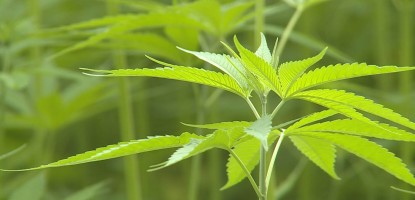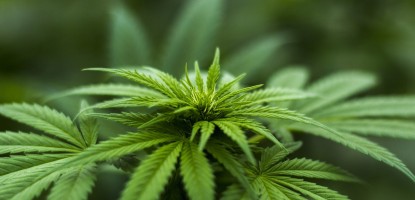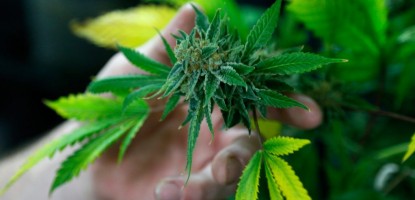How Hemp is helping us in the fight against climate change?

Global warming, due to climate change, is a major concern for all people in the world. The looming fear is that, if not addressed properly, it will cause the extinction of several species worldwide. Furthermore, it will affect human health, food security, and the living environment.
It is reported that greenhouse gas emission is the dominant factor in climate, followed by global deforestation. Without enough trees to offset the carbon gas in the environment, the climate will continue to be affected.
Industrial hemp has emerged as a successful crop fighting climate change.
Hemp is a natural product with multiple benefits. Despite its ambiguous association with marijuana, it is a non-psychoactive relative of the plant. Humans have cultivated cannabis for at least 12,000 years. Hemp is one of the oldest plants used for human purposes. According to the greenhouse manager at UConn, hemp occupies a unique space in the natural world. Colonists used its fiber in the early days of America. Hemp was so important to American history that its image was printed on money.
Hemp has been surrounded by much controversy over its close relation to marijuana. Despite the controversy, hemp is widely used as a natural alternative to cannabis in the fight against climate change. How?
Hemp absorbs impurities from the air
Hemp can sequester carbon from the atmosphere more effectively than trees. While newly planted trees can take decades to grow to maturity, hemp grows in just 100 days and can absorb as much as 1.5 units of carbon per hectare.
Scientists estimate that one hectare of hemp can absorb up to 1.6 tonnes of carbon in one year. Unlike trees, hemp can grow anywhere and quickly. Planting hemp anywhere can dramatically increase the amount of land used to reduce carbon. It is one of the easiest plants to grow and will offset your carbon footprint without investing in expensive equipment or extensive agricultural practices.
The high carbon-absorbing ability of hemp makes it a good choice as a climate-change fighter.
The hemp plant will not require much maintenance, making it a great solution for the fight against climate change. Once grown, hemp is a low-maintenance plant that pulls toxins from the soil and helps to clean the air. Furthermore, hemp leaves absorb carbon from the air, reducing the need for other materials to absorb carbon.
Hemp is non-toxic
Hemp is an incredible renewable resource, and there are numerous reasons why it should be used in the fight against climate change. Its large tap roots allow it to grow deep into the soil profile, grabbing the necessary nutrients and water to develop.
The accumulation of heavy metals in the soil pollutes the environment. These heavy metals are non-biodegradable and can persist for several years, posing a threat to human health and the environment.
The traditional form of detoxifying or reversing the environmental damage (remediation) is costly and can potentially damage the land. The alternative strategy is bioremediation, where the plants detoxify contaminants in the soil and environment.
Hemp is also an excellent candidate for bioremediation. This is because it is tolerant to different metal contaminants. Furthermore, the crop harvested from these contaminated sites can be distilled and used as biofuel, timber, and fodder.
Hemp is a substitute for wood products
Paper is required for various industrial purposes, but sourcing the raw material has proven to be costly because it requires proper forest management. Wood has been the chief raw material since the 19th century. However, the increasing need for paper has strained the forest. Furthermore, restrictions by the local government to save the forests are leading to a shortage. This requires an urgency to find fast-gro having raw material for paper other than wood plants. Hemp and bamboo, and kenaf have gotten considerable attention in recent years.
Hemp offers more biomass than wood and provides twice as much use as forests.
The hemp paper processing does not require bleach; instead, it uses peroxide, with is safe for the environment.
Hemp eases the burden of plastics
Plastic is the most adaptable material because it can deform into any shape. The current plastic version is made from ethylene and polypropylene from fossil fuel hydrocarbon. These materials are non-biodegradable and do not decompose easily; they accumulate in the natural environment and landfills.
Currently, only about 9 percent of plastics are recycled, while the remaining are in the atmosphere. Furthermore, petroleum-based plastics leave a devastating effect on water, wildlife, and land. That's why there's increasing demand for bio-based plastics.
Hemp plastic is environmental-friendly, bio-degradable, and can be a great alternative to synthetic plastic. The hemp-plastics can be used for packaging because they are lightweight and durable.
Hemp can be an alternative to fossil fuels.
Traditional fossil fuels pollute the air during manufacturing, which depletes the ozone level, a primary cause of climate change.
Hemp biofuel has been considered as an alternative, and this can reduce the dependency on fossil fuels. Other energy products like briquettes or pellets (used for heat production) can be used for heat production.
Hemp eases the construction burden
The construction industry consumes a lot of energy (about 32 percent) of global energy demand. It is also responsible for about 10 percent of the carbon emissions. Because of that, sustainable and eco-friendly materials are in high demand.
Hempcrete has proven to be a good option. The material is highly porous and has low thermal conductivity, meaning it can be used to regulate heat waves in the summer and reduce heat loss in the winter without any need for insulation work.
Hemp is a substitute for non-organic cotton
Water usage has become a focal point with farmers because of drought. Some plants, like cotton, require too much water to grow. Compared to hemp, cotton requires about four times and a much longer period to grow.
Hemp requires about 80 gallons of water (from rainwater) to produce about 2 pounds of fiber.
Hemp is a renewable plant fiber and is much stronger than cotton. It is also more durable and absorbent. And unlike cotton, hemp fabrics retain their color and shape even after multiple piles of washing. Unfortunately, conventional cotton is far more popular than hemp, and the fashion industry continues to use it as a cheap and sustainable alternative.
Final thoughts
Hemp proves to be an excellent alternative for new and sustainable resources because it is resistant to diseases, and pests, decomposes quickly, conserves water, and produces environmentally friendly products like biodiesel, bio-composite, paper, and textile.
The hemp biofuel is also a great option for petroleum-based fuel to produce heat and energy for both transport and industrial sectors. Furthermore, hempcrete helps to decrease cement in the building material, which is known to produce carbon.
Because of its versatility and lightweight, hemp plastic can compete with other bioplastics.
These and many other reasons make hemp, a non-psychoactive relative of marijuana, a great way to combat climate change. Not only is it low in hemp maintenance, but it's also easy to grow. And unlike marijuana, hemp is not toxic or addictive.
As global warming continues, hemp business opportunities will likely increase. Adaptation to a hotter Earth will require new fuel, food, and housing sources.






Leave a Comment